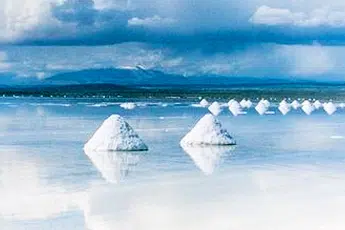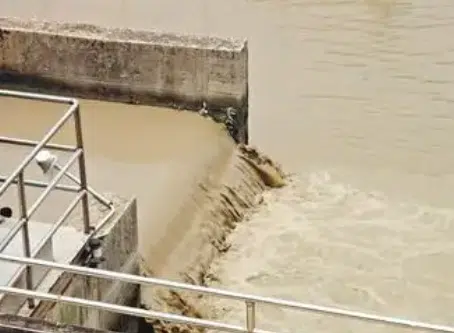The term "chemical indicators" refers to the indicators of water quality that are constructed through the utilization of chemical reactions, biochemical reactions, and the principles of physical chemistry. These indicators are referred to collectively as "chemical chemical indicators."In accordance with the many different approaches to analysis, it is possible to summarize chemical indicators in the following manner.
1. of water; 2. the method of heating and oxidant decomposition uses the amount of carbon dioxide that is produced during heating and decomposition, the amount of oxygen that is consumed during decomposition, or the amount of oxidation that is consumed chemical oxygen consumption to express the content of organic compounds, including living organisms; 4. the methodology of biochemical reactions is represented by biochemical oxygen consumption, which measures the amount of oxygen that is consumed by microorganisms when they are decomposing organic matter. The measurement of the amount of carbon dioxide that is produced by microorganisms during the process of respiration and the utilization of enzymatic activity methods such as dehydrogenase are both included in this concept.
The fifth method is represented by redox reactions and techniques involving precipitation.
The electrochemical method of operation.
Seventh, the components that have been identified. Instrumental analysis is the primary method of detection, and it consist of a variety of techniques such as spectrophotometry, atomic absorption spectrometry, gas chromatography, liquid chromatography, neutron activation analysis, and plasma emission spectrometry, amongst others. Because every aquatic ecosystem environment is subjected to a comprehensive evaluation parameters of water quality, which is accomplished by conducting an investigation, monitoring, and analysis of a number of indicators that are carefully chosen and representative of the ecosystem. This evaluation is meant to ensure that the ecosystem is functioning properly.

It should be emphasized that the findings of investigations and analyses of biological indicators of water quality are becoming increasingly important for the scientific evaluation of the quality of the water environment. This is something that should be emphasized. Countries such as the United Kingdom, the United States of America, and Japan all base their requirements on the water environment from an ecological point of view and place a significant amount of importance on biological monitoring. Their requirements are based on the water environment. For example, in 1969, fish stocks were reestablished in the Thames River in the United Kingdom as a result of long-term management of the environment. This was accomplished in the United countries. Both the knowledge judgment method and the bacteriological indicators have been included on the list of ministerial water environment quality standards in my country. The knowledge judgment method has been incorporated into the relevant water environment quality indicators.
In the majority of cases, the selection and determination of the physical and chemical indicators for water environment investigation or monitoring analysis projects are based on the current and future uses of a variety of water bodies. This is the case for both the investigation and the monitoring projects. Standard investigation, detection investigation, and special topic investigation are frequently utilized as the foundation for the investigation of pollutants in the water environment. Basic investigation is the most common type of investigation. A wide range of different indicator items are selected for a variety of purposes, including, amongst other things, surveys regarding sexual orientation and surveys regarding emergency situations.
In addition, there are frequently differences between freshwater bodies and saltwater vessels. These differences can be difficult to distinguish. Furthermore, the process of selecting and determining survey or monitoring indicators is itself a process that gradually deepens and continuously develops throughout the course of the process. This is because the process itself is gradual and continuous. An example of this would be the proliferation of new chemical substances, the development of analytical methods, and the incorporation of pollution indicators into epidemiological research. All of these factors have contributed to the spread of pollution.
In order to carry out in-depth research on the physiological and biochemical processes that are accountable for carcinogenesis parameters of water quality, teratogenesis, and mutagenesis, monitoring or investigation projects will continue to go through changes, and methods will gradually develop and improve. This is done for the purpose of conducting research.
The testing system is able to carry out experiments on physical and chemical indicators of water quality in three distinct ways: on-site testing, shipboard testing, and onshore laboratory testing. These experiments can be carried out in order to conduct testing experiments on water quality indicators. Whenever there is a change in either the temperature or the pressure, there will be a corresponding change in the point at water quality parameters for various industries which the chemical equilibrium is maintained. For example, the concentration ratio of HCO3-/CO32- plasma components and the amount of dissolved gases that are present will both undergo changes. Both of these will be affected by the changes.
An ever-increasing number of products are currently able to undergo testing on-site at this time. As a result of the development of remote sensing technology, which makes it possible to test a large number of products at the same time, it is now possible to test a wide variety of water quality index items simultaneously. Nevertheless, field testing in high-depth waters, particularly oceans, with the assistance of instrument probes frequently encounters a great deal of difficulty. This is especially true in tropical waters. Furthermore, in circumstances where on-site testing instruments have not yet gained widespread acceptance, it is frequently necessary to collect samples of water prior to conducting water quality physical and chemical index testing. This is because the samples are used to determine the quality of the water. Following that, the testing can be carried out in laboratories that are situated either on land or on cruise ships.

As a result of the development of technology that enables automated analysis, automatic testing systems have gradually become more prevalent in the investigation, monitoring, and analysis of water quality indicators. This is due to the ability of these systems to perform automated analysis. This particular system is distinguished by its automation, instrumentation, and continuity of operation. Automated testing systems have been put into place for a wide range of water parameters at the present time. These parameters include temperature, pH, conductivity, redox potential, turbidity, suspended solids, dissolved oxygen, COD, TOC, TOD, specific metal ions, cyanide, and many others. The automatic testing system has the capacity to prevent the incompleteness of the data obtained through manual sampling and to significantly reduce the amount of time that elapses between the analysis of the samples and the acquisition of results. Both of these benefits are important for the effectiveness of the system.
However, the automatic testing system is subject to a few limitations that must be taken into consideration. In order to achieve this goal water quality parameters for various industries, it is necessary to carry out a number of chemical pretreatment procedures as well as a variety of high-sensitivity tests. In what way is the detection made? Therefore, the development of technology that is capable of performing continuous and regular testing, as well as the combination of this technology with technology that is capable of performing laboratory sampling and analysis, is a series of practical ways to improve the physical and chemical indicators of water quality. Moreover, this technology can be combined with that technology.



